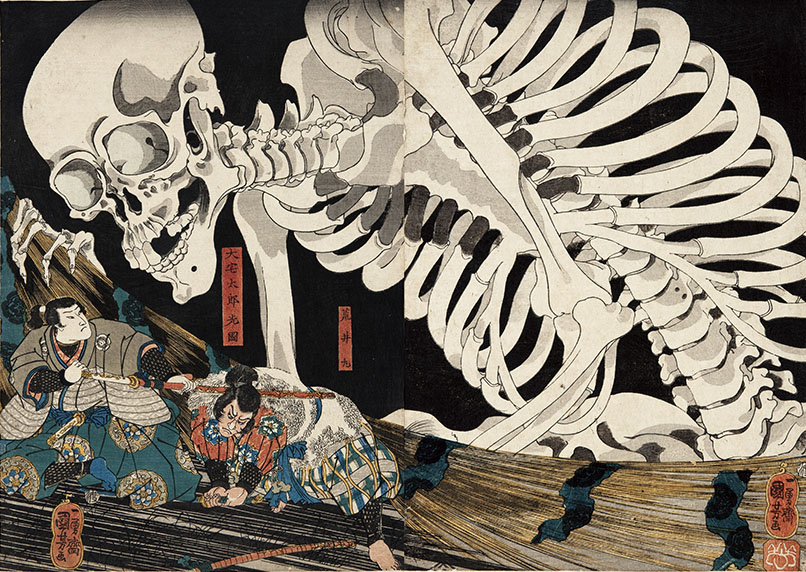"Japanese Ghosts and Eerie Creatures" at the Osaka Museum of History is mostly play, with little horror. This is because so much of the genre's visual and thematic core was part of the spectacle of the stage in 17th-century kabuki theater, and among the wide variety of other prints and paintings you'll find caricature, parody and comic invention. The truly macabre is only a side show, as in the splattered bloody gore of "A Ghost Holding a Woman's Head" by Keisai Eisen (1790-1848). Playful fiction is never far from spilling over into reality, however, as in the anatomical sketches that were used as visual evidence of "monsters" that terrorized Motogi village (in present-day Fukuoka) between 1680-84.
The selection of works for this exhibition come from the collection of the nihonga (Japanese-style) painter Yoshikawa Kanpo (1894-1978), who set out to accumulate the variety of pictorial folk knowledge that was his research. His collection, of which this show is only a fraction, focuses on works from the mid-Edo Period, when the genre of yokai and yurei (monsters and spirits or ghosts) became particularly popular, through to the Showa Era (1926-1989). The span, coincidentally, is the one important to Japan's modernization, and as this progressed, culture carried with it heightened fears and superstitions of the nation's past.
The exhibition gets under way with skeletons who continue their daily routines as if alive, such as "A Skeleton Practicing Zazen on the Waves" attributed to Maruyama Okyo (1733-1795). They dance in a painting by Toshu Zenchu (1839-1925), and attack the living in "A Huge Skeleton Attacking Oya Taro Mitsukuni" by Utagawa Kuniyoshi (1797-1862).


















With your current subscription plan you can comment on stories. However, before writing your first comment, please create a display name in the Profile section of your subscriber account page.